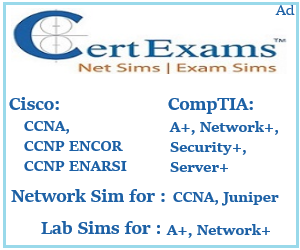NOTE: This file is located at C:\Windows\System32\secpol.msc.
2. Event Viewer maintains logs about program, security, and
system events. You can use Event Viewer to view and manage the
event logs, gather information about hardware and software problems,
and monitor Windows 2000 security events.
To open Event Viewer, click 'Start', point to 'Settings',
and then click 'Control Panel'. Double-click 'Administrative
Tools', and then double-click Event Viewer.
3. Event Log Explorer helps you to quickly browse, find and
report on problems, security warnings and all other events that
are generated within Windows. Monitoring and analysis of events
recorded in Security, System, Application and other logs of
Microsoft Windows NT/2000/XP/2003 operating systems can be useful
in identifying and diagnosing problems.
4. Microsoft Windows XP automatic update feature enables
a user to stay current with the latest updates for their computer.
You can enable or disable automatic updates by going to "automatic
updates" tab of System applet of Control Panel.
5. Microsoft Windows XP comes pre-installed with a software
firewall utility although by default this feature is not enabled.
Enabling the Windows XP firewall:
-
a. Click Start, Settings, Control Panel and open Network
Connections.
-
b. Within the Network Connections window right click
the Local Area Connection and select properties.
-
c. Within the Local Area Connection Properties window
click the Advanced tab.
-
d. Finally, check the Protect my computer and network
by limiting or preventing access to this computer from the
Internet option.
6. The default spool folder is located at: Systemroot\System32\spool\printers.
For example, if the OS is residing on C drive, the default location
will be: "C:\\WINNT\System32\spool\printers". You can access
this location through:
-
Start -> Printers -> File -> Server Properties -> Advanced
tab. Type in the new spool location over the default location.
7. You can use Add/ Remove applet in the Control Panel to
add or remove a program.
1.6 Setup and configure Windows networking
on a client/desktop
1. For accessing the Internet using static IP addressing,
you need to configure the IP address, subnet mask, default gateway
(if required by the ISP), and DNS server information.
2. IPCONFIG gives the current IP address assigned to the
computer.
3. The default subnet masks for various classes of IP address
are given below:
- Class A: 255.0.0.0
- Class B: 255.255.0.0
- Class C: 255.255.255.0
4.You can ping the loop back address at 127.0.0.1. A response
ensures that the TCP/IP stact is installed properly on your
computer.
5. You can use both Ping Localhost and Ping 127.0.0.1 to
see whether the TCP/IP stack is installed properly. Ipconfig
is used to obtain the TCP/IP configuration information, such
as the IP address, subnet mask, default gateway etc. on the
local computer.
6. Remote Desktop Connection (RDC, also called Remote Desktop,
formerly known as Microsoft Terminal Services Client, or mstsc)
is the client application for Remote Desktop Services. It allows
a user to remotely log in to a networked computer running the
terminal services server. RDC presents the desktop interface
(or application GUI) of the remote system, as if it was accessed
locally.
1.7 Perform preventive maintenance procedures
using appropriate tools
1. To schedule Automatic Updates on Windows XP:
-
1. Click Start, click Control Panel, and then double-click
System.
-
2. On the Automatic Updates tab, click Automatically
download the updates, and install them on the schedule that
I specify.
-
3. Click to select the day and time that you want to
download and install updates.
2. In Windows 2000, to configure Automatic Updates, do the
following:
-
1. Click Start, click Control Panel, and then double-click
Automatic Updates.
-
2. Click Automatically download the updates, and install
them on the schedule that I specify.
-
3. Click to select the day and time that you want to
download and install updates.
1.8 Explain the differences among basic
OS security settings
1. Microsoft Internet Explorer and Windows Explorer can be
used for assigning Share and NTFS permissions on a Windows 2000
computer.
2. On a stand-alone computer or a computer that is a member
of a workgroup, a user account establishes the privileges assigned
to each user. The three user accounts available are: Administrator,
Limited, and Guest. The important features of these accounts
are as given below:
3. Administrator account:
- Can create and delete user accounts on the computer.
- Can change other users' account names, passwords, and
account types.
4. Limited account:
- Generally cannot install software or hardware, but can
access programs that have already been installed on the
computer.
- Can create, change, or delete his or her password.
- Cannot change his or her account name or account type.
A user with a computer administrator account must make these
kinds of changes.
- Can manage his or her network passwords, create a reset
password disk, and set up his or her account to use a .NET
Passport.
5. Guest account:
- Cannot install software or hardware, but can access
applications that have already been installed on the computer.
- Cannot change the guest account type.
6. Standard user account
- Cannot install software or hardware, but can access
applications that have already been installed on the computer.
- Cannot change the guest account type.
- If you're using a standard account, some programs might
require you to provide an administrator password before
you can perform certain tasks.
7. Windows Vista Home Basic, Vista Home Premium, and Vista
Starter provide only limited support for EFS (Encrypted File
System), whereas Vista Business, and Vista Ultimate provide
full support for EFS. Upgrade to Windows Vista Ultimate. You
can upgrade to Windows Vista Ultimate from Windows XP Home,
XP Professional, XP Media Center, and XP Tablet PC, Windows
2000 Professional can't be upgraded to Windows Vista directly.


